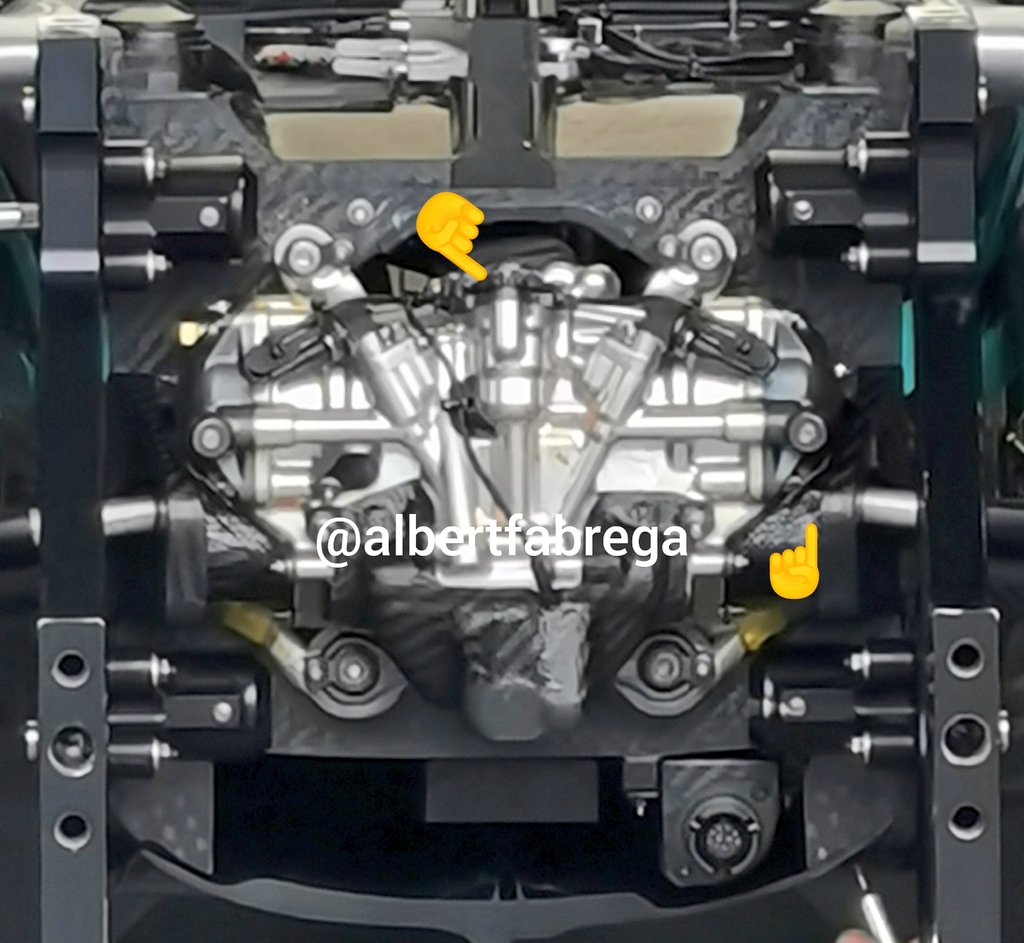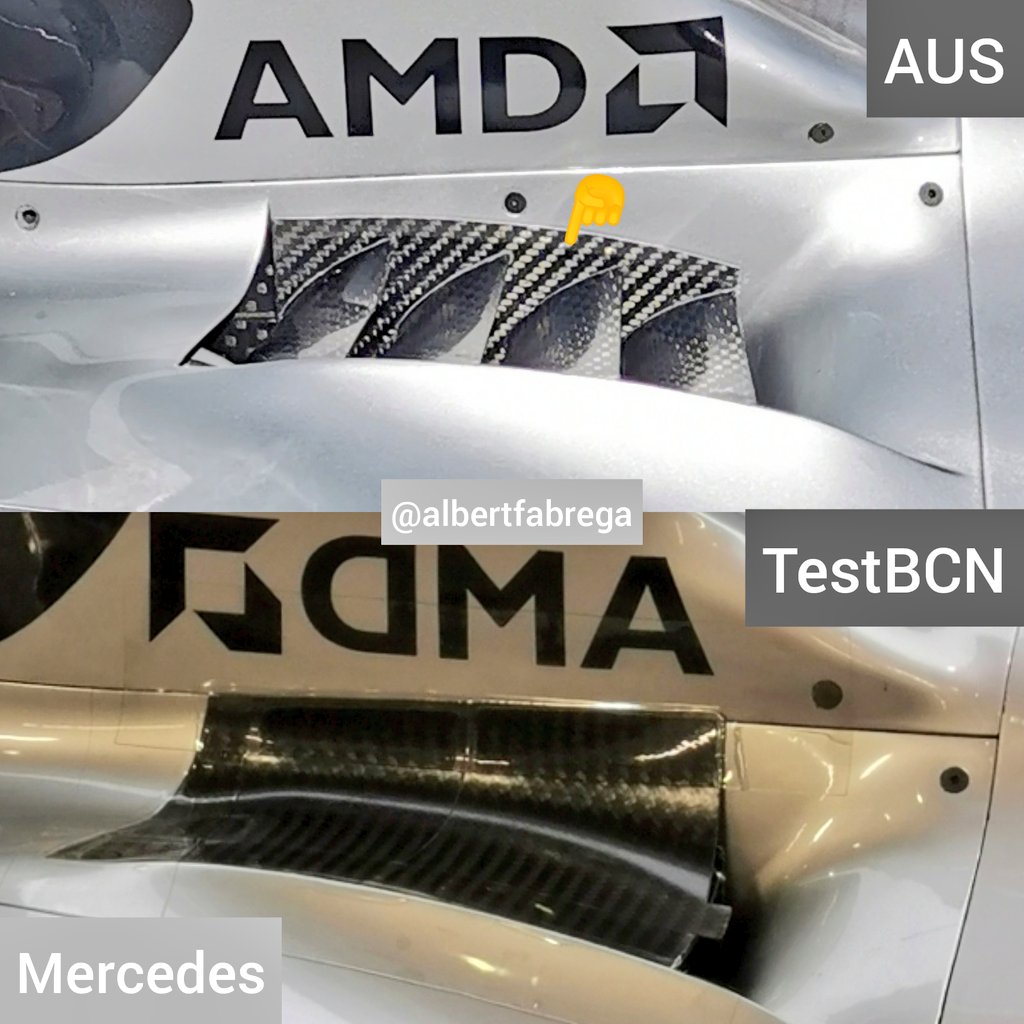
- Login or Register
No account yet? Sign up


The aero advantages Will be inevitable the more Angle they use. And they won t use Just One degree having the ability to switch It to zero on straights. They Will use a lot of Toe in turns , something other teams wont be able to use to avoid straights tyre consumption and drag and zero Toe on straights. The difference Will give the aero advantage.Just_a_fan wrote: ↑12 Mar 2020, 03:32If you gain on a single lap it could be tyre management - sometimes we've seen cars fall away at the end of a lap because the tyres have given up.mmred wrote: ↑12 Mar 2020, 03:20
If you gain on a single lap It s aero for sure
If you gain in wheel cooling It can be aero too
If the car becomes unstable, not faster, in certain condition then i say It Is not a safe system
Do You Always deliberately change the meaning of what people say to you? Bah
Wheel cooling can be aero but it's definitely wheel cooling. Wheel cooling benefits tyre performance much more than aero performance, I'd have thought.
If the car became unstable in certain conditions then the team won't run it. If it's not run in those conditions then it's not unsafe.
I have changed no meanings that I am aware of, although I'm guessing you're not a native English speaker which means there may be subtle differences in our understanding of meanings. If that is so, it is not my intention to use that to my advantage in our discussion. We're all here to learn from each other.
(I sent a "congratulations on your engagement" card to some German friends recently. I had to spend some time looking up the correct German phrases for the card - my German is limited to asking for beer, food and a bed for the night!So I'm aware how working in non-native languages is tricky.)



Yes the wheels are not aero devices, thus moving the wheel itself isn't the issue. If adjusting the toe angle changes the ride height of the car then its moving every aero element of the car, that is the aero devices that are moving.
Which is what turning the front wheels does every time the cars corner. So is steering illegal? Of course not, and this is "steering" so falls under the same controls.Maplesoup wrote: ↑12 Mar 2020, 10:18Yes the wheels are not aero devices, thus moving the wheel itself isn't the issue. If adjusting the toe angle changes the ride height of the car then its moving every aero element of the car, that is the aero devices that are moving.
The wheels can have an aero effect. The das is using the wheel as aero devices reducing drag on straights and reverting to an otherway impossible setup on turns.Maplesoup wrote: ↑12 Mar 2020, 10:18Yes the wheels are not aero devices, thus moving the wheel itself isn't the issue. If adjusting the toe angle changes the ride height of the car then its moving every aero element of the car, that is the aero devices that are moving.
How does one find if adjusting toe angle changes the ride height? FIA scrutineering doesn't happen while the car is moving! If one can establish the same under static conditions that when the toe angle is changed, it contributes to the change of ride height, then yes it would be considered as moving aero. The other critical element that need to be taken into account, while talking about change of ride height when the car is moving in straight line, is the aero load. Current cars are sophisticated enough to achieve the necessary ride height change on a straight line with the amount of aero load they get, along with such highly accomplished suspension systems. What additional benefit would DAS generate beyond that from a ride height perspective?Maplesoup wrote: ↑12 Mar 2020, 10:18Yes the wheels are not aero devices, thus moving the wheel itself isn't the issue. If adjusting the toe angle changes the ride height of the car then its moving every aero element of the car, that is the aero devices that are moving.
The ride height topic Is minimal. The drag reduction tough Is sensibile imhoGPR-A wrote: ↑12 Mar 2020, 10:40How does one find if adjusting toe angle changes the ride height? FIA scrutineering doesn't happen while the car is moving! If one can establish the same under static conditions that when the toe angle is changed, it contributes to the change of ride height, then yes it would be considered as moving aero. The other critical element that need to be taken into account, while talking about change of ride height when the car is moving in straight line, is the aero load. Current cars are sophisticated enough to achieve the necessary ride height change on a straight line with the amount of aero load they get, along with such highly accomplished suspension systems. What additional benefit would DAS generate beyond that from a ride height perspective?

You wrote a novel just to say "i agree".mmred wrote: ↑10 Mar 2020, 00:18That doesnt change our comparison.Giblet wrote: ↑09 Mar 2020, 23:44Each car has exactly ONE perfect radius, every other one is a compromise.mmred wrote: ↑08 Mar 2020, 16:08
It Is less balanced because
Compared to the same car with shorter wheelbase It Is less balanced on sharp turns.
Any comparison in every field Is Always done fixing other factors according to the Superposition principle. It s an engeneering first year fundamental
Tuning more factors, mainly suspension geometry, you can compensate the unbalance. But that doesnt change that you could have an even Better balance reducing the axial distance, so It Always give an advantage.... Design Is compromising
You can have a perfect radius that maximizes the performance of that car but the same car with a shorter wheelbase Is more stable on sharp turns.
And It can go faster even overall, and usually It Is so, and i explain you why.
Indeed Since stability on fast corners Is mainly given by aerodinamic characteristics, while the mechanical ones play a Key role in sharp turns you end up with an overall more stable car on most turns.
To make an example a longer wheelbase Is more adapt to the 130 r, but aerodynamics keep you on track in that corner not mechanical balance , while you cant turn properly at Antony nogues. What s the Better overall car? If aero Is not a limiting factor, the sharp turns make the difference while the long turns are full throttle for both versions of the same car.
A longer wheelbase gains other advantages tough, aerodinamic ones, less drag that gives you the ability to choose more Wing and so aerodinamic stability, but those are other factors, useful in very different and rare tracks.
I said in a side by side comparison a shorter wheelbase gives an advantages in sharp turns. Without other factors. I repeat that.
I add It Is usually better also overall. But It costs you drag so the design choice Is a compromise


